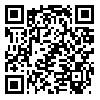BibTeX | RIS | EndNote | Medlars | ProCite | Reference Manager | RefWorks
Send citation to:
URL: http://ijpcp.iums.ac.ir/article-1-157-en.html
2- Tehran University of Medical Sciences
Abstract
Objectives: This study aimed to evaluate and compare neurological soft signs (NSS) in patients with first episode psychosis, in their first-degree relatives, and in healthy control subjects.
Method: Thirty patients with first-episode psychosis, 30 of their first-degree relatives, and 30 healthy controls were evaluated by the Structured Clinical Interview for DSM-IV (SCID) for psychiatric assessment. Neurological Evaluation Scale (NES) was used for the evaluation of NSS, and Edinburgh Handedness Inventory (EHI) for laterality assessment. Data were analyzed by the following statistical tests: Chi-square, t-test, Fisher’s Exact Test, Kolmogorov-Smirnov Test, and non-parametric tests of Kruskal-Wallis and Mann-Whitney.
Results: First-episode psychotic patients had significantly higher NES total scores than the first-degree relatives, and the control group. On “sequencing of complex motor acts”, “motor coordination”, and “sensory integration” subscales of the NES, patients had significantly higher scores than the controls (respective p-values of <0.01, <0.001, & <0.01). Patients had significantly higher scores than their relatives on “motor coordination”, and “eye movements” (p-values <0.05). There were no significant differences in NSS between the first-degree relatives and healthy controls on NES total scores.
Conclusion: A higher prevalence of NSS occurs in patients with first-episode psychosis than in their relatives or healthy control subjects. Neurological soft signs are part of a neural dysfunction that underlies psychosis rather than the consequence of a neurodegene-rative processes caused by the disease.
Received: 2007/08/25 | Published: 2007/08/15
| Rights and permissions | |
 |
This work is licensed under a Creative Commons Attribution-NonCommercial 4.0 International License. |



